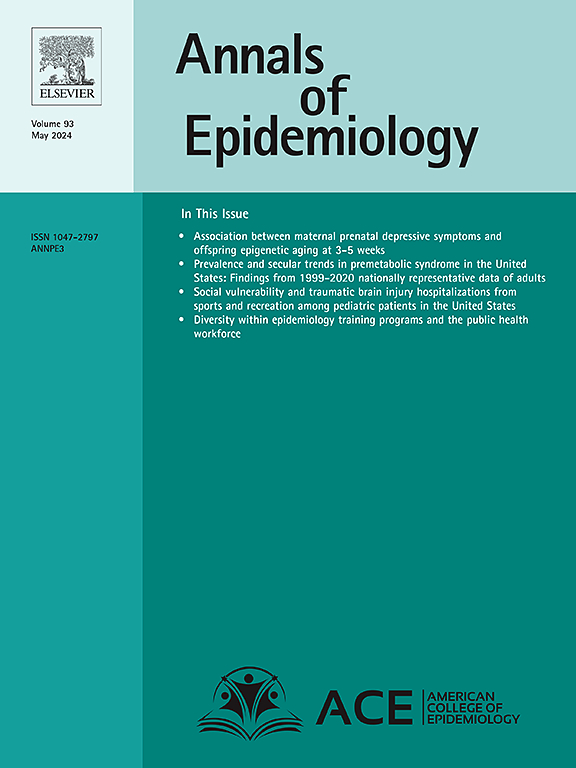Comparison of two measurement error–correction approaches for assessing the association between choline intake and coronary heart disease prevalence among US community-dwelling adults
IF 3
3区 医学
Q1 PUBLIC, ENVIRONMENTAL & OCCUPATIONAL HEALTH
引用次数: 0
Abstract
Purpose
This study compared two measurement error–correction approaches—linear mixed-effects approach to measurement error–correction (MEM) and simulation–extrapolation (SIMEX)—for assessing the association between choline intake and coronary heart disease (CHD) prevalence among United States (US) community-dwelling adults.
Methods
Simulations were conducted to evaluate the performances of five estimation approaches: benchmark analysis, 1-day method, average method (AveMethod), MEM, and SIMEX. Data from the National Health and Nutrition Examination Survey (NHANES) were analyzed to determine the relationship between choline intake and CHD prevalence using these methods.
Results
Both MEM and SIMEX effectively corrected for measurement error–induced biases; MEM generally outperformed SIMEX except when the standard deviation of true exposure () exceeded the standard deviation of random measurement error (). Analysis of NHANES data revealed that choline intake was significantly and inversely associated with CHD prevalence using the 1-day method (= −0.39; 95 % confidence interval: −0.72, −0.05; odds ratio: 0.68). Other approaches did not reveal statistically significant associations.
Conclusions
MEM and SIMEX mitigated most measurement error–related biases in the simulations, although MEM demonstrated better overall performance. After correction for measurement error, choline intake was not significantly associated with CHD prevalence.
两种测量误差校正方法在美国社区居民中评估胆碱摄入量与冠心病患病率之间关系的比较
目的:本研究比较了两种测量误差校正方法——线性混合效应测量误差校正法(MEM)和模拟外推法(SIMEX)——以评估美国(US)社区成年人胆碱摄入量与冠心病(CHD)患病率之间的关系。方法:对基准分析、1天法、平均法(AveMethod)、MEM和SIMEX五种估计方法的性能进行模拟评价。使用这些方法分析来自国家健康和营养检查调查(NHANES)的数据,以确定胆碱摄入量与冠心病患病率之间的关系。结果:MEM和SIMEX都有效地纠正了测量误差引起的偏差;除了真实暴露标准差(σX)超过随机测量误差标准差(σU)外,MEM总体优于SIMEX。NHANES数据分析显示,使用1天方法,胆碱摄入量与冠心病患病率呈显著负相关(β = -0.39;95%置信区间:-0.72,-0.05;优势比:0.68)。其他方法没有发现统计学上显著的关联。结论:MEM和SIMEX减轻了模拟中大多数测量误差相关的偏差,尽管MEM表现出更好的整体性能。校正测量误差后,胆碱摄入量与冠心病患病率无显著相关性。
本文章由计算机程序翻译,如有差异,请以英文原文为准。
求助全文
约1分钟内获得全文
求助全文
来源期刊

Annals of Epidemiology
医学-公共卫生、环境卫生与职业卫生
CiteScore
7.40
自引率
1.80%
发文量
207
审稿时长
59 days
期刊介绍:
The journal emphasizes the application of epidemiologic methods to issues that affect the distribution and determinants of human illness in diverse contexts. Its primary focus is on chronic and acute conditions of diverse etiologies and of major importance to clinical medicine, public health, and health care delivery.
 求助内容:
求助内容: 应助结果提醒方式:
应助结果提醒方式:


